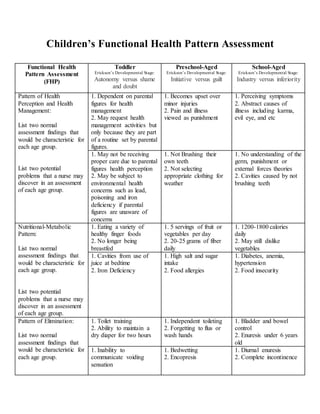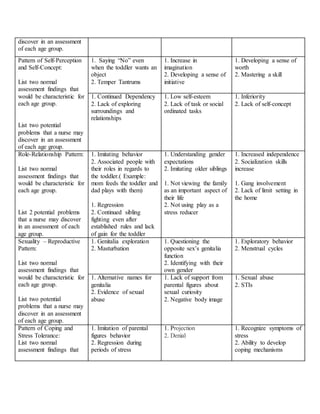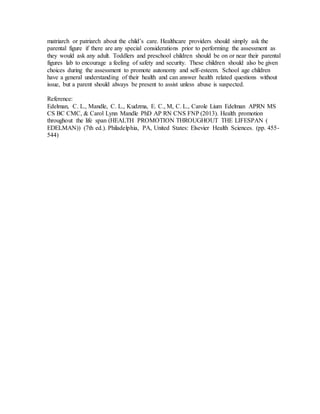1) The document provides an assessment of functional health patterns in children across three age groups: toddlers, preschool-aged, and school-aged children. For each age group and pattern, it lists two normal assessment findings and two potential problems a nurse may discover.
2) Patterns assessed include functional health, nutritional-metabolic, elimination, activity and exercise, cognitive/perceptual, sleep and rest, self-perception, role-relationships, sexuality/reproduction, coping and stress tolerance, and values and beliefs.
3) Similarities across age groups include parental influence on health values and beliefs. Differences include developmentally appropriate assessments findings for things like toileting, nutrition, motor skills




